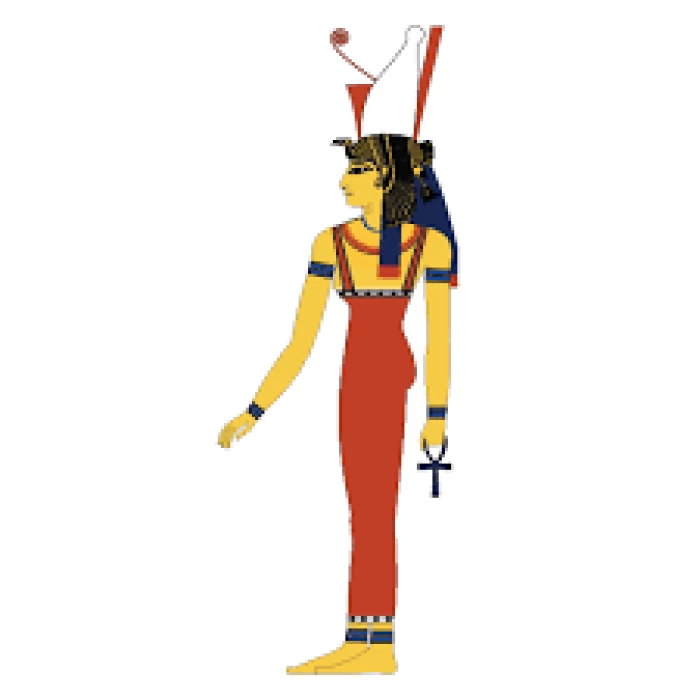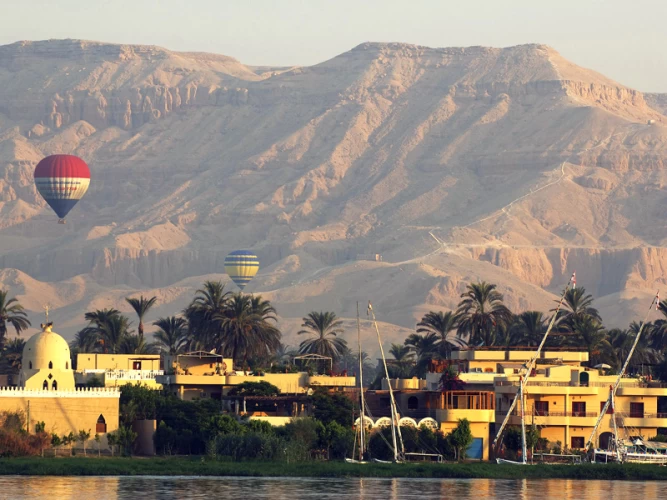
Diosa Mut | Dioses en el Antiguo Egipto
La diosa Mut está representada por el buitre que en egipcio tiene el valor fonético mwt que significa "madre". Su iconografía también la presenta con una apariencia multicolor con un tocado en forma de buitre coronado por la doble corona del Alto y Bajo Egipto. Se le dedicó un lugar cerca de Tebas, llamado Templo de Aser.
En el arte, Mut fue retratada como una mujer con alas de buitre, sosteniendo un signo ankh (llave de la vida), luciendo la doble corona de las tierras del Alto y Bajo Egipto y un vestido rojo o azul, con la pluma del la diosa Maat a sus pies.
Mut se representa a veces como una cobra, un gato, una vaca o como una leona además de un buitre. Antes del final del Imperio Nuevo, casi todas las imágenes de figuras femeninas que llevaban la doble corona del Alto y el Bajo Egipto eran representaciones de la diosa Mut, etiquetada aquí como "Señora del Cielo, Señora de todos los Dioses". La última imagen de esta página muestra los rasgos del rostro de la diosa que marcan este como un trabajo realizado a veces entre la dinastía XVIII y relativamente en el reinado de Ramsés II.
La reina Hatshepsut hizo reconstruir el antiguo templo Mut en Karnak durante su reinado en la XVIII dinastía. Los excavadores anteriores habían pensado que Amenhotep III hizo construir el templo debido a los cientos de estatuas encontradas para Sekhmet que tenían su nombre. Sin embargo, Hatshepsut, que completó una gran cantidad de templos y edificios públicos, había completado el trabajo 75 años antes. Comenzó la costumbre de pintar a Mut con la corona tanto del Alto como del Bajo Egipto. Se cree que Amenhotep III eliminó la mayoría de los signos de Hatshepsut mientras se atribuía el mérito de los proyectos que había construido.
The goddess Mut is represented by the vulture which in Egyptian has the phonetic value mwt which means "mother". Her iconography also presents her with a multi-colored appearance with a vulture-shaped headdress surmounted by the double crown of Upper and Lower Egypt. A place near Thebes was dedicated to her, called the Temple of Asher.
Mut is sometimes depicted as a cobra, a cat, a cow, or as a lioness as well as a vulture. Before the end of the New Kingdom, almost all the images of female figures wearing the double crown of Upper and Lower Egypt were depictions of the goddess Mut, labeled here as "Lady of Heaven, Mistress of all Gods". The last image on this page shows the features of the goddess's face which mark this as a work done sometime between the 18th dynasty and relatively in the reign of Ramses II.
Queen Hatshepsut had the ancient Mut temple in Karnak rebuilt during her reign in the 18th dynasty. Previous excavators had thought that Amenhotep III had the temple built because of the hundreds of statues found for Sekhmet which had his name. However, Hatshepsut, who completed a huge number of temples and public buildings, had completed the work 75 years earlier. He began the custom of painting Mut with the crown of both Upper and Lower Egypt. Amenhotep III is believed to have removed most of the signs of Hatshepsut while taking credit for the projects he had built.
The Family Connections of the Goddess Mut
According to ancient texts, Mut had no fathers, as mythology holds that she was the Great Mother. However, despite being a mother goddess, she did not bear children. Instead, she adopted the war and moon goddesses, Mentu and Khonsu, respectively.
To worship the Theban Triad, the ancient Egyptians constructed the Temple of Amun at Luxor...During the 18th and 25th Dynasties, this triad was made up of Amun, his spouse Mut, and their son Khonsu.
Mut Cult
Temples of Mut can still be found in modern-day Egypt and Sudan. This reflects the popularity and devotion Mut enjoyed in ancient times. In Egypt, it became the Temple of Karnak, and in Sudan.
According to history, this temple housed the statue considered to be the actual embodiment of the Ka. The daily Mut cult involved rituals performed by the king and her priestesses. The interior reliefs of the temple depict scenes of priestesses worshipping Mut. Uniquely, these reliefs are the only surviving depictions of women practicing the cult from the ancient Egyptian period...During the 18th century, Pharaoh Hatshepsut ordered the reconstruction of the temple dedicated to Mut at Karnak. Hatshepsut began the tradition of depicting Mut in the crowns of Upper and Lower Egypt. Some historians believe that Amenhotep III removed most of Hatshepsut's markings and took credit for the project.
















